In 2016, an updated edition of a very popular board game from 2007, Agricola was released. In this Agricola Revised Edition Board Game Review, you can find out whether it’s reasonable to upgrade and if it’s a good game on its own.
Facts
| Published | 2016 |
| Designer | Uwe Rosenberg |
| Artist | Klemens Franz |
| Players | 1-4, works well with all numbers |
| Playing time | 30-45 minutes per player |
| Complexity | medium/heavy |
| Price | Check Here |
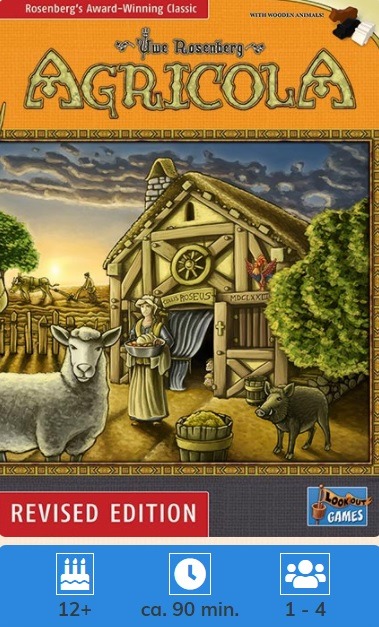
I am an Amazon Associates affiliate and will earn a commission should you buy something following one of the links.
Theme
Although farming is not an easy job, it’s still a lot easier than it was in the past. Agricola is set in the 17th century when farmers had to scrap for every bite and every resource. It gives you a taste of how tough farming without modern machinery, crops, fertilizer, and pesticides was.
The theme in Agricola is very strong. Resources are gathered by fishing, working in forests and quarries, crops grow on fields and must be cooked into food, you can acquire new workers by having children, your workers can acquire occupations that are an alternative way of learning a living, and animals breed and have offspring.
It all revolves around producing enough food to feed your family and avoid becoming beggars. Yes, expanding your farm and renovating your house is all nice and nets you points, but what good is a nice house if you have to go to bed hungry?
The hard-working nature of the game makes your achievements even more remarkable. Sense of ownership over the farm, progress and development of your home and family, and satisfaction of work well done, Agricola will reward you greatly.
Components
Components (with excellent Klemens Franz art) help achieve this feeling. The Revised Edition finally adds animeeples (carved wooden animals) and shaped resource tokens, which greatly increase the immersion.
Puzzle-pice extensions (player count dependent) for the mainboard are also a big improvement over the original and make the setup faster. Moreover, it makes plays for all player counts smooth.
Another change is that the Revised Edition supports 4 players instead of 5 (an extension is available).
The rulebook itself is pretty good, I had no trouble understanding how to play. But it takes a while to read – it’s 12 pages of text, supported with useful illustrations.
On top of that, there is also a 12-page appendix. This is more casually written and comes with tips, several game variants, an explanation of game terms, and the scoring in detail. While it’s not necessary for learning, it does help a lot with understanding the game and also gives you plenty of ideas on how to get the most out of it.

Setup
Each player receives his personal 5×3 board onto which he will place new rooms, fields, and pastures.
The central board contains basic worker actions and has room for new action cards, as they become unlocked later on.
On the supply board, major improvements are placed. These are cards like Fireplace and Cooking Hearth, that make it a lot easier to cook food. They are available to all players – they can build them if they have the resources (and if the card is still available).
Next, each player will be dealt a hand of 7 Occupation cards and 7 Minor Improvements cards. These are only available to you and greatly influence how you will approach a game since they offer bonuses in certain areas.
There is some luck involved here, but it has been greatly mitigated in the Revised Edition. The selection of cards has been refined and re-worded (169 Occupation cards reduced to 48 and 149 Minor improvements to 48). You can get to know the cards a lot better and they feel like each has a place in the game. Quality over quantity, I guess.
Moreover, you can mitigate the luck by drafting the cards manually (take one and pass one, and other variants). Several draft mechanics are suggested in the appendix.
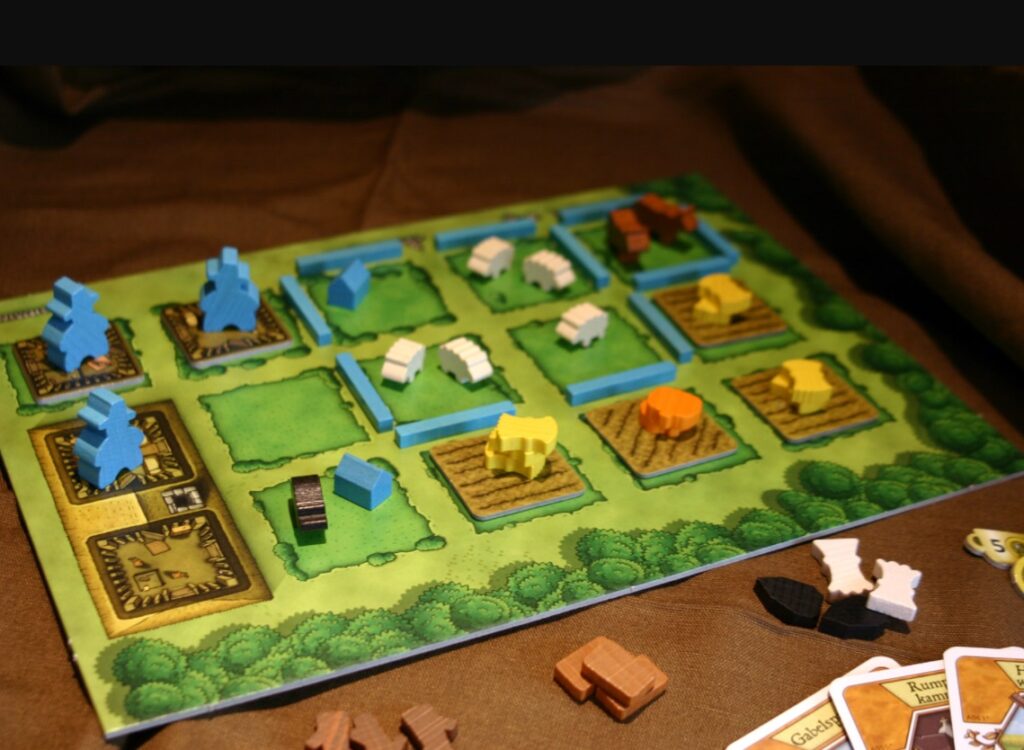
Gameplay Basics
A game of Agricola is placed over 14 rounds, during which there are six harvest rounds. The goal is to produce enough food for your family and to develop your farm so that it’s worth a lot of points.
Each round, you will place your workers on slots. These allow you to gather resources, play occupation cards, gather animals, build pastures, stables, and rooms, renovate your house, build major and minor improvements, cook food, acquire new workers, and so on.
Several actions require prerequisites. For example, to get a new worker, you need a new room, for which you need material to build. To bake bread, you need to build an oven. For grain, you need to plow a field and have enough seeds. And so on – the chaining is always thematic and makes sense.
Rounds go through four phases, whereas the fourth phase (Harvest) only happens in rounds 4, 7, 9, 11, 13, and 14.
- Preparation phase
New action space is introduced to the main board. as the game goes on, more and more advanced actions will become available. - Work phase
This is where players place their workers and perform actions. - Workers return home.
- Harvest
You harvest grain and vegetables, and animals breed, but most importantly, you have to feed your family now.
After round 14, there is final scoring. I won’t go into detail, but the premise is, that the more rooms, improvements, fields, and animals you have on your farm, the more points will you earn.
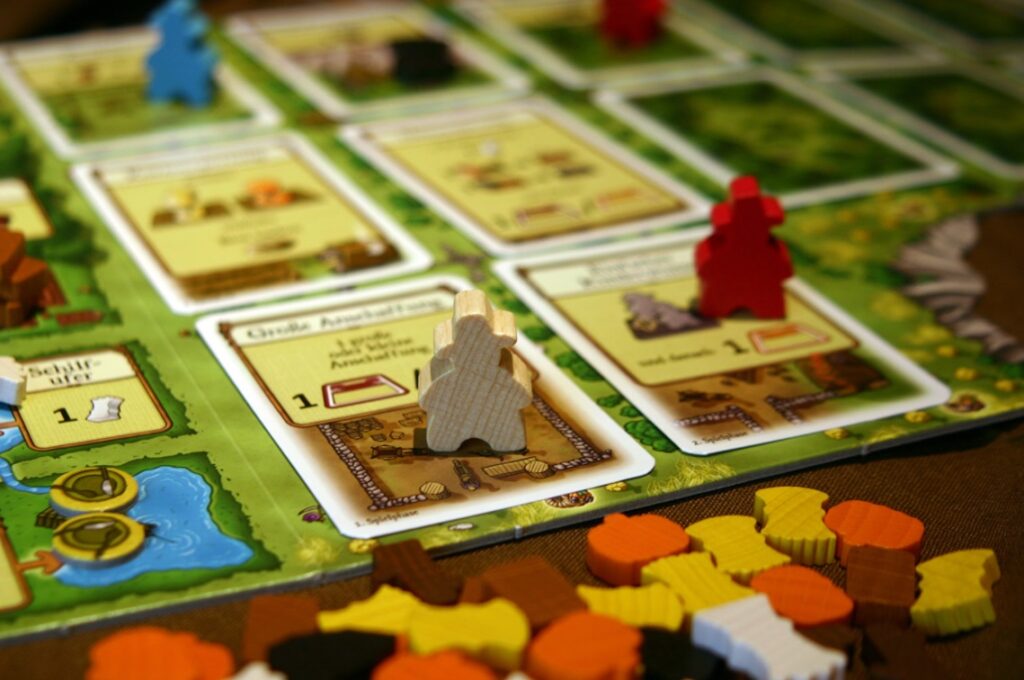
Noteworthy Expansions and Editions
We already mentioned the Agricola: Expansion for 5 and 6 Players (2016), which adds board and pieces for the fifth and sixth players. But there are further options to customize your copy.
Agricola: Farmers of the Moor (2018) is the largest expansion. It adds horses as the fourth animal. You now also have to heat your rooms with wood or peat and make sure your family does not become ill. Works with 5 and six players too.
Agricola: Artifex Deck (2017), Bubulcus Deck (2018), Corbarius Deck (2019), and Dulcinaria Deck (2020) add new occupation and minor improvement cards, with each pack containing over 100 cards.
Agricola Game Expansion: Red, Yellow, White, Blue, Purple, and Green (2017) are six mini-expansions that add five pre-painted miniatures of the color in the title plus twenty exclusive new cards each.
Agricola: Family Edition (2016) is a standalone game. Its mechanics are simplified; there are no stones or vegetables, no negative points, and no player boards, but only buildings and meadows that you add to your tableau.
Agricola: All Creatures Big and Small (2012) is a further simplified edition. It’s for only 2 players and it’s only about animals. You can read more about it in my Agricola: All Creatures Big and Small review.
Out of the above, Farmers of the Moor is the expansion you want to get. The decks do add a lot of variety but are nowhere essential. Unless you are a hardcore player, you will do just fine with the basic deck.
If you’re looking for a simplified version. go for Agricola: All Creatures Big and Small. It’s a great 2 player variant – simple, but still, with a lot of options, it catches the essence of Agricola well.
The Family Edition is somewhere in the middle, complexity-wise, and does not work well for any target audience. It’s still too complicated for casual players, but too simple for hardcore fans.
Digital Edition on Steam is another good way to experience the Revised Edition. It looks and plays beautifully and you can get it very cheaply. If you’re on the edge of buying the physical version, this is a great way to test out the gameplay.
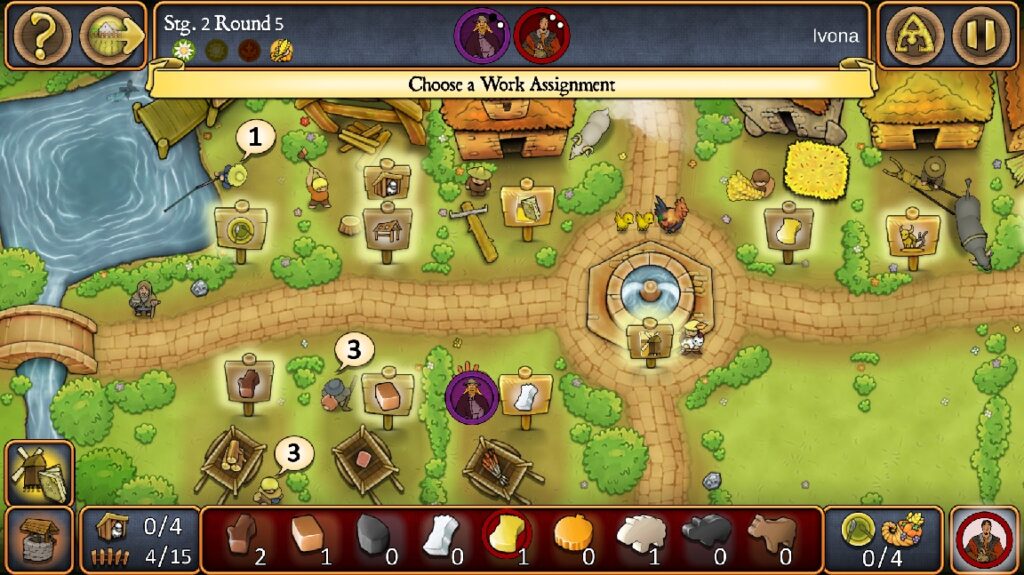
Some More Thoughts on Agricola: Revised Edition
It is probably worth reiterating how mechanically interesting and thematically simulated the game is. You feel like you’re actually there, on the farm. You need to go to the market to buy pigs, to the quarry for stones, then it’s time to gather some wood and build fences. When you got solid foundations, you and your wife can indulge in some child-making, which results in new workers.
The accumulation mechanic makes the resource tiles interesting. It’s really tempting to gather piled-up resources and give up on your initial plan if only to deny other players. This, combined with new action spaces every round and you having increasingly more workers, gives the game a feel of progress and change.
There’s competition for action spaces and some adaptation of strategy is needed from time to time. But the game is not spiteful if a space you were aiming for gets occupied. There are enough alternatives available – if you can’t make a new worker this round, you can maybe build a new improvement and have kids later. Or take that 8 wood that is just sitting there. Only if you have no alternatives, you can take the first player marker action.
The final scoring rewards balance. You lose points for features you don’t have or if you don’t fill the board completely. You will take a penalty for not having any pigs, rather than being awarded for hoarding twenty sheep.
The game can be very tough on beginners (the need to feed the family, all the different cards, actions, and icons). Early mistakes can set you well back and against an experienced player, you are guaranteed to lose.
There are some minor grudges I have against Agricola. The game runs too long and it can be frustrating when the necessary action slots are blocked (especially in the beginning, when everyone needs wood).
The higher player counts are especially tedious and draggy. It can take a while before it’s your turn again. This means you have to be in the right mood to play Agricola (it requires full investment) – it’s not a casual experience: you’ve got to work and are then rewarded with the fruits of your work – a nice farm and a well-fed family. How thematic (again).
The very good solo mode helps to alleviate this problem. I believe it’s a very good way to experience Agricola, especially with a campaign mode from the Appendix. It’s a series of increasingly harder challenges, not a narrative-driven experience.
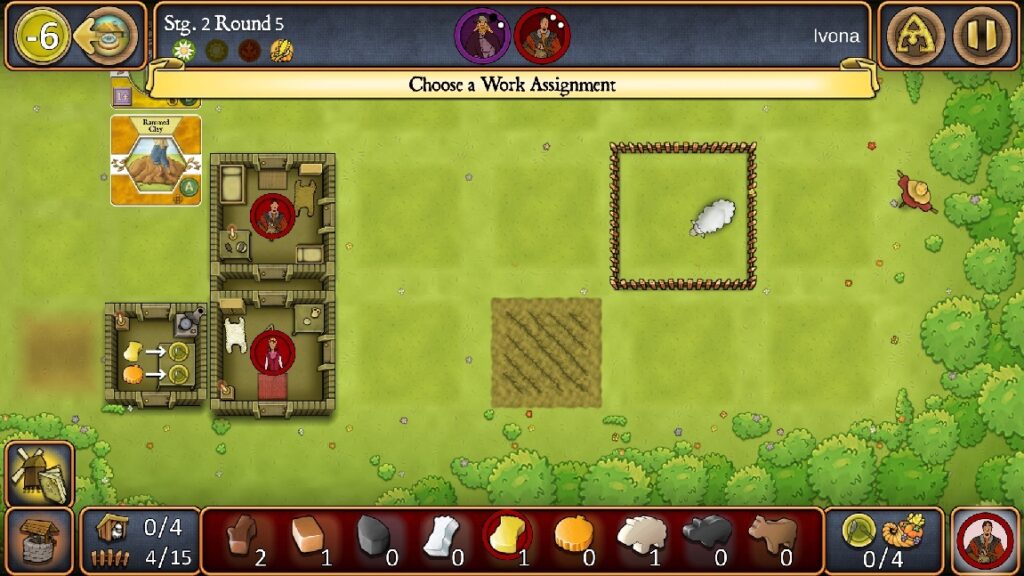
Conclusion
Agricola is a modern-day classic board game. It’s a heavy board game with a lot of rules, so it’s not for everyone. But those willing to accept the burden of hard work and providing for their family will be rewarded with a challenging farming experience.
Farming in the Andes: Altiplano
Even more so with the Revised Edition, which is a lot friendlier. You don’t need it if you already have the original, but if you don’t, the Revised Edition just might tip you into buying.
